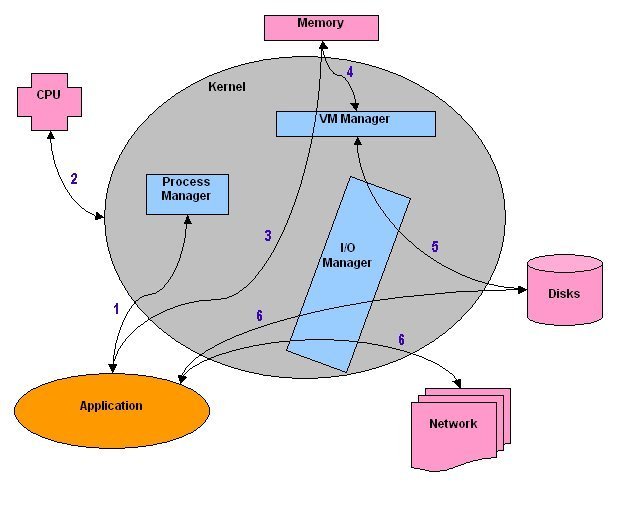What Is Spotlight on Windows?
Spotlight is a powerful diagnostic and monitoring tool for Unix operating systems. Its unique user interface provides you with an intuitive, visual representation of the activity on your host machine. Graphical flows illustrate the rate at which data is moving between system components. Icons display the value of key statistics and measurements (metrics).
The power of Spotlight lies in its ability to provide visual and audible warnings if the performance metrics exceed acceptable thresholds. The components and dataflows change color to show you the source of the problem.
A range of visual graphs and tabular grids provide you with detailed information about your Unix hosts. This information can be viewed on the screen or printed.
You can set Spotlight to warn you when a threshold is reached. You may set a number of thresholds so that warning messages are displayed well before the traffic levels into or out of a host become critical. Spotlight uses a number of different techniques to warn you when a Unix host is exceeding a threshold.
When Spotlight detects a condition that it considers is a potential problem, it not only informs you about it, but also advises you what you could look at to diagnose the problem further, and suggests corrective actions.
Features of Spotlight on Windows
- Spotlight presents a visual representation of process flows within a Windows operating system, allowing you to observe actual system activity in real time.
- It visually identifies system bottlenecks and provides extensive drilldown capabilities.
- It displays the details of problem areas, including CPU resources, paging activity, and memory use, for rapid problem resolution.
- It uses visual and audible warnings to alert you when performance metrics exceed acceptable thresholds.
- Its drilldowns provide detailed information about a specific component allowing you to pinpoint the source of problems.
- Spotlight learns the normal range of values for your system.
- Spotlight assesses the normal rate of process flows via a calibration process and sets the display speed of the visual indicators accordingly.
- It can simultaneously observe multiple systems.
- It is easy to install.
An Overview of The Windows Architecture
This diagram summarizes the architecture of Windows. This architecture is the basis for the design of the Spotlight home page. Spotlight Home Page
-
The Process Manager keeps track of processes and their threads. It is responsible for passing the threads to run on the CPU, although this is done through the Kernel.
The Process Manager has access to the low level subsystems through the Kernel. It has no direct access to any hardware.
- The Kernel is responsible for talking directly to hardware components such as Physical Memory and the CPU. (It actually talks through the Hardware Abstraction Layer (HAL); this can be thought of as transparent for architectural purposes however).
-
The Virtual Memory Manager is responsible for managing the physical memory. This is done through the Kernel.
The Virtual Memory Manager is also responsible for Application Virtual Memory Address space. Applications cannot talk directly to underlying systems such as Physical Memory or CPU. Applications use the Virtual Memory Manager to talk to underlying systems.
- The Virtual Memory Manager is responsible for managing the physical memory. This is done through the Kernel.
-
The Virtual Memory Manager maps part of its Virtual Address space addresses to space in a disk page file. The Virtual Memory Manager has no direct access to hardware however, and must therefore pass its request through the I/O Manager.
The I/O Manager is responsible for talking directly to hardware components such network and disk.
The Virtual Memory Manager is responsible for keeping track of the Virtual Address Space, and what addresses are allocated. The Virtual Memory Manager is also responsible for managing system virtual memory on disk. It does this by calling various I/O Manager functions.
- Applications must call the I/O Manager to access disk and network resources.
Home Page
Spotlight is a powerful diagnostic and problem-resolution tool for Windows operating systems. Its unique user interface provides you with an intuitive, visual representation of the activity on the host machine.
For information on Spotlight on Windows, see these sections
| Section |
Description |
|---|---|
| Background Information |
Introductory material to Spotlight on Windows. |
| Connect to a Windows System | Create / Modify / Delete connections to Windows systems. |
| Home Page | The Spotlight home page shows the flow of information and commands between various sub-components and the size and status of internal resources such as processes, disk files and memory structures. |
| Alarms |
Spotlight alerts you to problems with your system by issuing an alarm. You can configure Spotlight in the level of severity that constitutes an alarm, to disable an alarm, and the actions Spotlight takes on raising the alarm. |
| Drilldowns | When you have isolated a problem, you can display a drilldown page, whose charts and tables provide a detailed breakdown of the underlying statistics. |
| View | Options | Customize Spotlight. |
| Troubleshooting | Solve problems using Spotlight. |
For information on using Spotlight applications See

